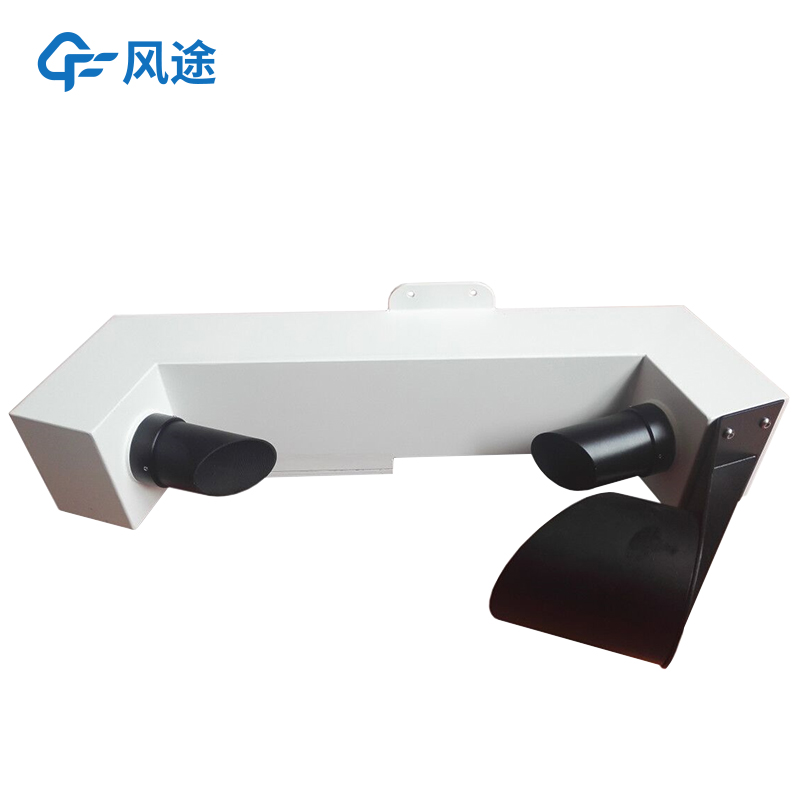Shandong Fengtu IOT Technology Co., Ltd
Sales Manager:Ms. Emily Wang
Cel,Whatsapp,Wechat:+86 15898932201
Email:info@fengtutec.com
Add:No. 155 Optoelectronic Industry Accelerator, Gaoxin District, Weifang, Shandong, China

Sales Manager:Ms. Emily Wang
Cel,Whatsapp,Wechat:+86 15898932201
Email:info@fengtutec.com
Add:No. 155 Optoelectronic Industry Accelerator, Gaoxin District, Weifang, Shandong, China
time:2025-10-16 09:55:27 source:Weather Station viewed:143 time
An Atmospheric Visibility Sensor is a professional meteorological instrument used to quantify atmospheric transparency. It provides precise visibility data by measuring the degree of light attenuation within a specific range. In fields such as traffic management, meteorological observation, and environmental monitoring, these instruments play a role in ensuring safety, guiding travel, and assessing air quality.
The core principle of an Atmospheric Visibility Sensor is that when light travels through the air, it is scattered and absorbed by aerosol particles (such as fog, haze, dust, etc.) in the atmosphere, resulting in attenuation of light intensity. The instrument scientifically measures this attenuation effect and calculates the meteorologically defined "meteorological optical range."
Currently, the mainstream measurement technology is the forward scattering method. Instruments using this technology feature a transmitter that emits a beam of infrared light to illuminate the air in the sampling area. Particles in the air scatter this light, and a receiver installed at a specific angle (usually between 33 and 45 degrees) measures the intensity of this scattered light. The intensity of scattered light is directly related to the concentration and size of particles in the air. The processor inside the instrument analyzes these signals to calculate the atmospheric extinction coefficient and ultimately derive the visibility value.
This technology is widely adopted due to its multiple advantages: the instrument has a compact structure, is easy to install and maintain; its sampling lens often adopts an overhead design that effectively reduces direct contamination from dust, rain, snow, etc., improving data reliability in harsh environments. Of course, this method assumes that the atmosphere is uniform and estimates the overall situation through scattering at specific angles, so it may have limitations in extremely inhomogeneous weather conditions.
Fengtu's product line covers various meteorological sensors and weather stations adapted to different scenarios, such as agricultural weather stations, campus weather stations, and ultrasonic weather stations. Adhering to the philosophy of "making instruments with dedication," the company has launched multiple visibility monitoring devices based on its technical accumulation in the meteorological monitoring field to meet application needs in different scenarios.
Portable Visibility Monitor: Model FT-BN20 features an integrated portable design with a built-in high-capacity battery and high-brightness touch screen, ready for use immediately after startup. This design makes it particularly suitable for emergency monitoring, mobile inspections, and other scenarios. For example, during sudden fog bank weather, traffic management departments can quickly deploy it to key road sections to obtain on-site visibility data in a timely manner. The housing is made of high-quality aluminum, providing excellent waterproof, dustproof, and anti-collision performance, enabling it to adapt to the harsh requirements of outdoor emergency use.
Visibility Sensor: Model FT-N2 is a professional device with low power consumption and high integration. It can not only output visibility values but also has weather phenomenon recognition capabilities, automatically identifying different weather conditions such as fog, rain, snow, and clear skies. Due to its extremely low power consumption, it can be conveniently powered by solar panels combined with batteries for long-term operation, making it ideal for integration into comprehensive traffic weather stations along highways or fixed environmental monitoring networks for unattended long-term monitoring.

Meteorological emergency monitoring is an action that utilizes professional equipment and technologies to collect meteorological data in real-time and dynamically in response to sudden meteorological disasters or abnormal meteorological conditions. Through the rapid monitoring and analysis of meteor...
In precipitation measurement, while rain gauges and tipping-bucket rain sensors enable convenient and accurate fixed-point observation, their coverage density is generally low in remote areas with sparse human population due to constraints on deployment conditions. This makes it difficult to effecti...
The quotations of agrometeorological stations are comprehensively affected by multiple factors such as equipment configuration and functions.In terms of equipment configuration, the configuration of meteorological sensors determines the price. If only basic temperature and humidity, wind speed and d...
All-in-One Weather Sensors are sensors that have gradually become popular in recent years.It has a high level of integration, which can be regarded as a major highlight. It integrates the monitoring functions of six key meteorological parameters, namely ambient temperature, relative humidity, wind s...